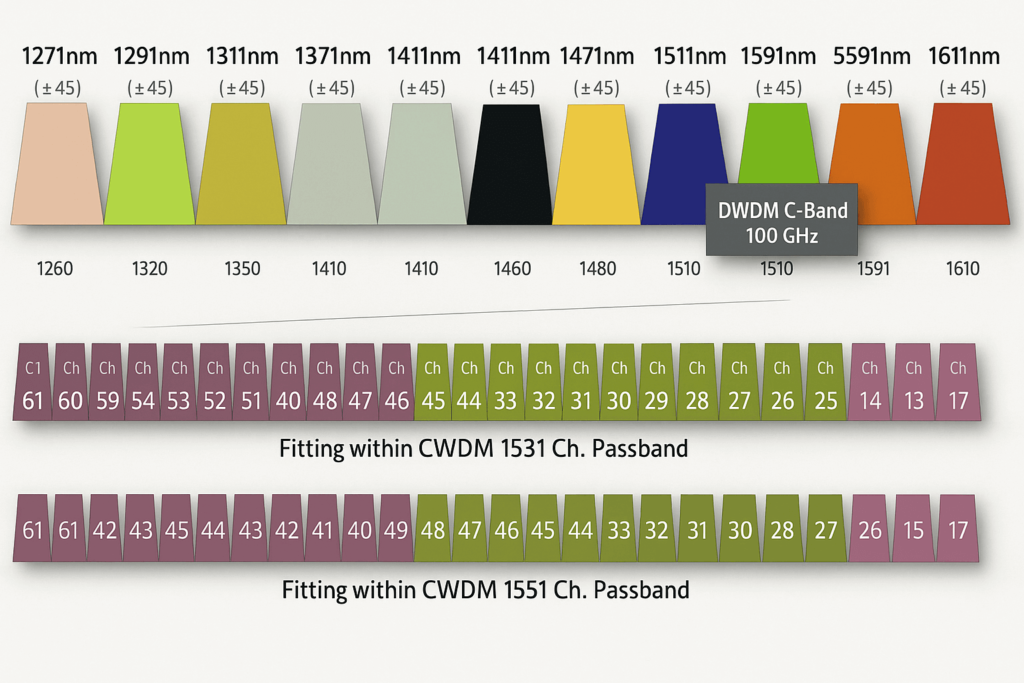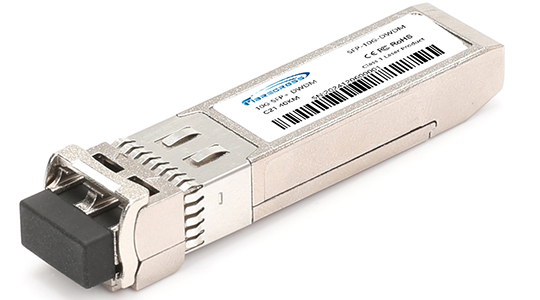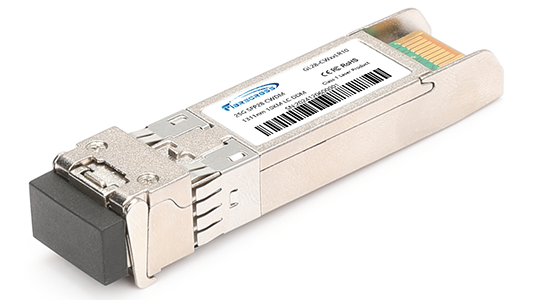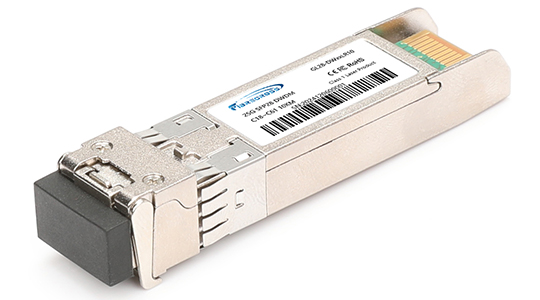What is Diffrence Between CWDM And DWDM?
Introduction
Purpose: Explain how CWDM and DWDM multiply fiber capacity by sending multiple wavelengths (colors) over the same strand.
Why It Matters: Network planners must balance cost, reach, and capacity when choosing between CWDM (Coarse Wavelength Division Multiplexing) and DWDM (Dense Wavelength Division Multiplexing).
Basics of Wavelength Division Multiplexing (WDM)
What Is a Wavelength?
Distance between peaks of a light wave (nm).
Different wavelengths coexist in one fiber without interfering.
What Is WDM?
Technique that “stacks” multiple data channels (each on its own wavelength) into a single fiber.
Increases throughput without laying new fiber.
What Is CWDM?
Coarse Wavelength Division Multiplexing (CWDM) uses relatively wide wavelength separations—typically 20 nm between channels—across the spectral range of roughly 1270 nm to 1610 nm. Early CWDM systems supported nine channels (from 1470 nm to 1610 nm), but standardization expanded this to 18 channels by including lower‐wavelength bands (1270 nm–1450 nm), albeit with slightly higher attenuation.
Channel Plan (Example):
1271 nm, 1291 nm, 1311 nm, 1331 nm, 1351 nm, 1371 nm, 1391 nm, 1411 nm, 1431 nm, 1451 nm, 1471 nm, 1491 nm, 1511 nm, 1531 nm, 1551 nm, 1571 nm, 1591 nm, 1611 nm.
Typical Use Cases: Metropolitan area networks, campus interconnects, and moderate‐distance links (up to ~80 km) where cost and simplicity outweigh ultra‐long‐haul needs.

What Is DWDM?
Dense Wavelength Division Multiplexing (DWDM) splits the optical spectrum into much narrower channels—commonly 50 GHz (≈0.4 nm) or 100 GHz (≈0.8 nm) spacing—concentrated around the C-band (≈1530 nm–1565 nm) or L-band (≈1565 nm–1625 nm). A single DWDM system can accommodate anywhere from 40 to 96 (and in some designs up to 160) channels on one fiber, enabling massive aggregate throughput.
Typical Use Cases: Long-haul backbone links, submarine cables, and any scenario requiring high channel count with low per-channel attenuation and the option to amplify multiple wavelengths simultaneously.

Purpose of CWDM and DWDM
Both CWDM and DWDM serve the same fundamental goal: to multiply an optical fiber’s capacity by transmitting multiple wavelengths over a single strand. The key trade-off is between cost and performance:
CWDM favors simplicity and lower cost in short-to-medium range.
DWDM targets maximum capacity and ultra-long reach with tighter channel control and optical amplification.
CWDM vs DWDM: Main Differences
| Feature | CWDM | DWDM |
|---|---|---|
| Channel Spacing | 20 nm | 100 GHz (~0.8 nm) or 50 GHz (~0.4 nm) |
| Total Channels (Max) | 18 | 40 – 96 (or more on 50 GHz grids) |
| Common Wavelength Range (nm) | 1270 – 1610 | 1530 – 1565 (C-band), 1565 – 1625 (L-band if supported) |
| Typical Unamplified Reach | Up to ~80 km | Up to ~80 km (for short-haul); much farther with amps |
| Amplification | Rare | Common (EDFAs, Raman amps) |
| Transceiver Cost (per port) | Lower (broad‐tolerance uncooled optics) | Higher (narrow‐tolerance, often thermally stabilized) |
| Passive Components | Simpler/cheaper mux/demux | More precise (and expensive) mux/demux |
| Power Consumption | Lower (often passive devices) | Higher (amps, dispersion modules, EDFAs) |
| Scalability | Up to 18 channels (practical deployments: 4–8) | 40 – 96+ channels; easy to add wavelengths dynamically |
| Common Bit Rates | 1 G, 10 G, 25 G (unamplified up to ~80 km) | 10 G, 40 G, 100 G, 400 G (long-haul with amplification) |
| Typical Applications | Metro/Campus, short-haul, enterprise | Long-haul backbone, large data centers, submarine |
| Ideal When… | Cost & simplicity are priorities; reach ≤ 80 km | Maximum capacity or very long distances are required |
CWDM vs DWDM: Advantages and Disadvantages
CWDM
Advantages
Lower Cost:
Uncooled SFP/SFP+ modules
Simpler passive mux/demux (wider tolerances)
Ease of Deployment:
Passive components (no power or management)
Less demanding temperature/tolerance requirements
Energy Efficiency:
No need for EDFAs in most cases
Disadvantages
Limited Channel Count:
Max 18 channels (practically 4–8 in most setups)
Distance Constraints:
Up to ~80 km without amplification; performance degrades at lower wavelengths (1270–1450 nm)
Restricted Future Growth:
Adding channels may require replacing or upgrading mux/demux modules
DWDM
Advantages
High Capacity:
40–96+ channels → multi-Tbps potential per fiber
Ultra-Long Haul:
With EDFAs/DCMs, can span hundreds to thousands of kilometers
Scalability & Flexibility:
Operators can inject new DWDM channels onto existing fiber
Tunable DWDM transceivers available
Disadvantages
Higher Cost:
Narrow-tolerance optics, thermally stabilized lasers
More expensive passive optics (mux/demux)
Increased Complexity & Power:
Need for optical amplifiers, dispersion compensation, and monitoring
Longer Lead Times:
Precision components often have longer procurement cycles
Decision Guide: When to Choose CWDM vs. DWDM
| Scenario | Recommended Solution |
|---|---|
| Budget is tight; only a few (≤ 8) wavelengths are needed; links ≤ 80 km. | CWDM |
| You need 10 G or 25 G per wavelength, reach ≤ 80 km, and limited channel count. | CWDM |
| You require 40 G, 100 G, or 400 G per wavelength; future growth to dozens of channels. | DWDM |
| Links exceed 80 km or you need to span metro/backbone (> 100 km). | DWDM |
| You anticipate adding channels without laying new fiber. | DWDM |
| Power and rack space are extremely constrained; minimal active components desired. | CWDM |
Conclusion:
CWDM Strengths: Cost-effective, simple, lower power—ideal for up to ~80 km, small channel counts (≤ 8–12).
DWDM Strengths: Ultra-high capacity, long-reach, easily scalable—essential for backbone, submarine, or large data centers where dozens of channels are needed.
CWDM: Up to 18 (standard). Typical deployments use 4–8 channels.
DWDM: 40–96 (100 GHz grid); 80–160+ (50 GHz grid).
More Fibers: Simple but expensive (right-of-way, trenching, leases).
CWDM/DWDM: Maximizes existing fiber capacity. Higher gear cost but saves on fiber installation/rental.
Hybrid Platforms: Some vendors offer systems that carry CWDM wavelengths plus a subset of DWDM channels within the same chassis—ideal for evolving networks.
10 G CWDM: Up to ~80 km unamplified.
10 G DWDM: ~80 km unamplified; hundreds of kilometers with EDFAs.
25 G CWDM: ~20–30 km unamplified.
25 G DWDM: ~80 km unamplified; far longer with amps.
100 G CWDM (O-band/C-band): 2–30 km unamplified.
100 G DWDM: 80–100 km unamplified; hundreds of km with amplification.
Hybrid CWDM/DWDM Chassis (mixed lanes)
Higher Bitrates: 400 G, 800 G, 1 Tb/s per wavelength
Software-Defined Optical Networking (SDON) for dynamic provisioning
Lower-Power, Tunable Lasers and more efficient EDFAs





